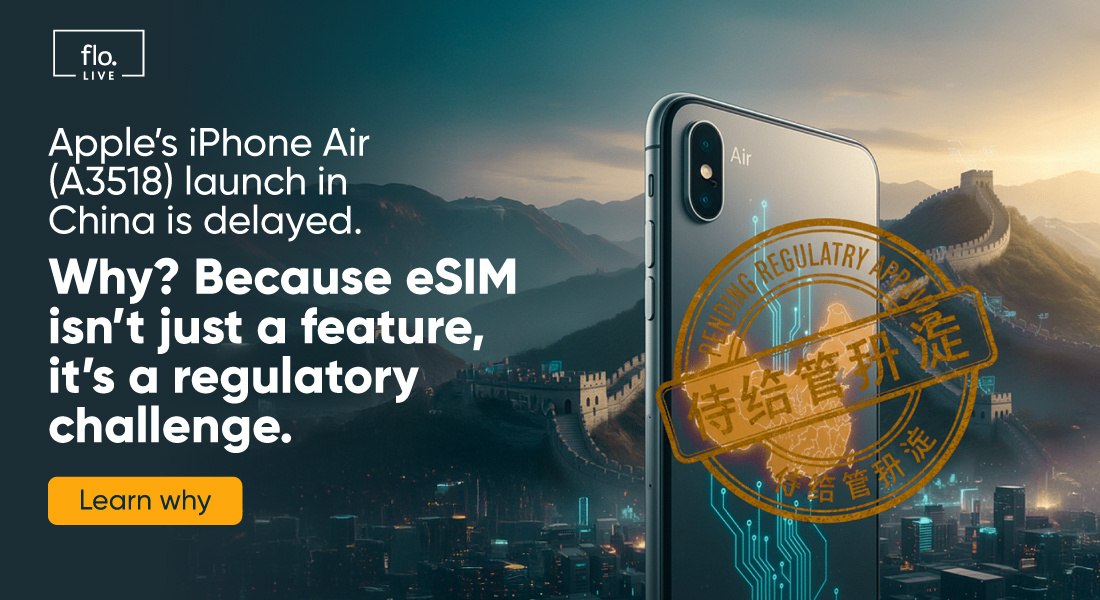Page Contents
Building Connectivity into the Design Stage

Page Contents
Building connectivity into the design phase of an IoT (Internet of Things) project is crucial for ensuring reliable and efficient communication between devices, network, and the application layer. Defining project requirements and choosing the appropriate connectivity technologies will help determine security requirements, optimize for performance and power consumption, design for future scalability and flexibility and meet compliance requirements.
Not putting connectivity at the forefront of design is like putting the cart before the horse, and trying to work backward can delay time to market and potentially cause cost overruns. Here is a checklist of questions to ask as you begin your design stage:
What Cellular Technologies Are There?
In digital solutions, there is no one-size-fits-all approach to connectivity. This is ultimately beneficial because the requirements of digital solutions vary greatly and one connectivity technology might be radically opposite of what the use case requirements are.
In general, currently the market offers the following choices:
- 2G
- 3G
- 4G LTE
- 5G
- NB-IoT
- LTE-M
- IoT-NTN, which combines cellular and non-terrestrial satellite
By understanding your choices, you can then move on to more use-case-specific requirements, which yield significant impact on which technology you select. The following questions address those:
What is the Required Bandwidth?
Bandwidth is a fundamental aspect of IoT system design that affects performance, scalability, and reliability. Ensuring that IoT networks have adequate bandwidth is essential for supporting diverse applications, maintaining quality of service, enabling real-time data processing, and accommodating future growth.
Bandwidth requirements are going to vary by use case and are important when choosing a network technology.
For example, in smart metering, low bandwidth is suitable as smart meters send small amounts of data infrequently, like hourly or daily. But in video surveillance, high bandwidth is required to transmit continuous video streams, especially in high definition. Or autonomous vehicles, which require extremely high bandwidth (as well as low latency) for real-time data exchange between vehicles and infrastructure.
The bandwidth of 5G or 4G LTE is going to be much greater than that of a low power network.
What is Your Latency Tolerance?
Latency, much like bandwidth, is going to be use-case-dependent. As I mentioned before, autonomous vehicles will require incredibly low latency, which is the delay between when data is sent from one point to another and when it is received.
Latency is a major consideration in AI and edge applications and needs high-capacity connectivity like 5G. Other applications don’t require ultra-low latency and pairing these devices with high-power connectivity will run high costs and quickly deplete power resources.
How Does the Device Behave?
Device behavior significantly impacts the selection of connectivity options in IoT projects. The behavior of an IoT device includes its data generation patterns, power consumption needs, mobility, how often the device wakes up and operational environment.
This is, overall, a mix of latency, bandwidth, power consumption, and mobility requirements of the use case. Smart labels, for example, are used in logistics and asset management and need to connect wherever they travel, versus a warehouse monitor that stays on a shelf for its entire lifecycle. Location matters, as well. For example, in remote locations, options like satellite and LPWAN (NB-IoT, LTE-M, LoRaWAN, Sigfox), are more suitable due to their long-range communication capabilities.
What are Your Power-Saving Needs?
eDRX (Extended Discontinuous Reception) and PSM (Power Saving Mode) are two power-saving features used in cellular IoT communication technologies, such as LTE-M and NB-IoT. In certain use cases, devices are deployed in the field for their entire lifecycle and operate on a battery, therefore preserving battery life is incredibly important.
eDRX allows devices to stay in a low-power sleep mode for extended periods, significantly reducing power consumption.
Device eDRX cycles can be configured to match their specific application needs, ranging from seconds to hours. Despite extended sleep periods, devices periodically wake up to check for messages, ensuring they remain reachable by the network. This saves considerable energy by reducing the frequency of wake-ups to check for network messages.
PSM offers extended battery life because devices enter a deep sleep mode, shutting down most of their functions, including their cellular modem, which drastically reduces power consumption. During PSM, the device doesn’t perform any network-related activities, such as listening for paging messages and the device only draws minimal power to keep its essential functions running, making it extremely energy efficient. Devices can be configured to wake up at predefined intervals to transmit data or check for incoming messages and the duration of the sleep period can be customized based on specific application requirements, ranging from minutes to days.
Is Your Use Case Cost-Driven or Quality-Driven?
Different connectivity options can be considered under the determinants of cost or quality. Some low-power wide-area networks will offer lower costs that help with the large-scale deployment of device fleets.
Satellite-only connectivity is going to be more costly. 5G is likely going to require upgrades if you have more compatibility with legacy networks, such as 2G and 3G. SIM technology will be impactful, as well, with costs associated with eUICC and platform integrations.
Do you Require Network Redundancy?
Network redundancy is an important consideration and can be highly relevant to your use case. Redundancy is going to be most applicable for moving devices and for critical communications.
Traditionally, devices have been equipped with a SIM card that holds a single profile that connects to the roaming footprint of a single network operator. But in the event of a network failure, connectivity will be lost until the network functions are restored.
Solutions can be built with network redundancy by leveraging multi-profile SIM cards – whether that is Multi-IMSI SIM, eUICC (eSIM), or both – that can connect via more than one profiles and then be programmed to automatically switch in case of reduced performances or outages so connectivity is never lost.
Not every use case needs this, for example, a stationary monitor in a warehouse that never moves and takes infrequent readings likely doesn’t need network redundancy, so it’s important to understand the specific requirements of the use case.
Where Will You Deploy?
Geographical considerations are incredibly pertinent in designing connectivity. As mentioned before, a multi-profile SIM approach allows devices to connect to more than one network. Some use cases, a device might never leave a single network or require redundancy, but in geographically dispersed and moving use cases, it is important to know where your devices are going and to ensure that coverage can be met in those locations.
Leveraging roaming agreements or working with multiple mobile network operators is surely an option but it’s not going to deliver a complete globally complaint connectivity, nor a homogenues performance around the globe, which is where a localized approach to global connectivity is preferred.
Delivering The Right Connectivity
At floLIVE, we understand that there are many use cases and myriad requirements within the digital ecosystem. We have a purpose-built connectivity infrastructure designed for flexibility, customisation, and optimised for your specific business objectives.
Our suite of services and solutions include:
- Device testing to ensure seamless connectivity with your devices anywhere in the world
- Assistance in selecting the optimal network for your needs, including cost and coverage optimisation
- 24/7 fully human support to proactively manage and troubleshoot
- Pay-as-you-go to ensure value and scale with less risk
Designing connectivity for your important operations can be complex, but with floLIVE, it doesn’t have to be. I’ll provide greater details on adding connectivity into your solutions from the forefront, along with other industry experts, during a panel session during IoT Days Summer. You can register here now.


Join Our Newsletter
Get the latest tips and insights in our monthly newsletter.









